18 Amazing Houseplants That Absorb Everyday Radiation
Plants have long been valued for their calming presence indoors. Some varieties are believed to absorb radiation and reduce its impact in your living space. This makes them useful for both decoration and well-being. They require simple care while offering a natural touch of freshness. You can place them in bedrooms, living rooms, or work areas for added comfort.
This post may contain affiliate links, which helps keep this content free. Please read our disclosure for more info.
Aloe Vera
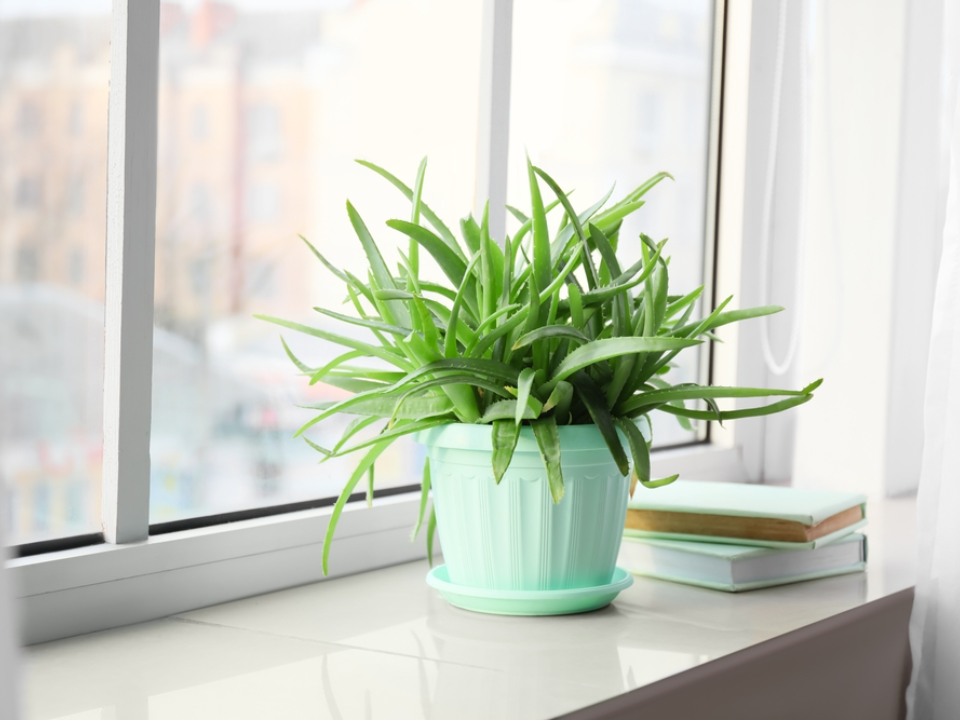
Aloe Vera is believed to absorb some electromagnetic radiation from household devices. Its thick, fleshy leaves store water and keep the plant resilient in many indoor settings. This makes it a practical choice for desks, living rooms, and bedrooms. Beyond radiation, it also filters indoor air and provides soothing gel inside the leaves. Its simple look fits well with modern or traditional interiors.
To care for Aloe Vera, place it in bright but indirect sunlight. Water the plant sparingly since it thrives in drier soil. Make sure the pot drains well to avoid root rot. Trim older leaves if they dry out to maintain a healthy appearance. With minimal effort, Aloe Vera can grow well for many years.
Areca Palm
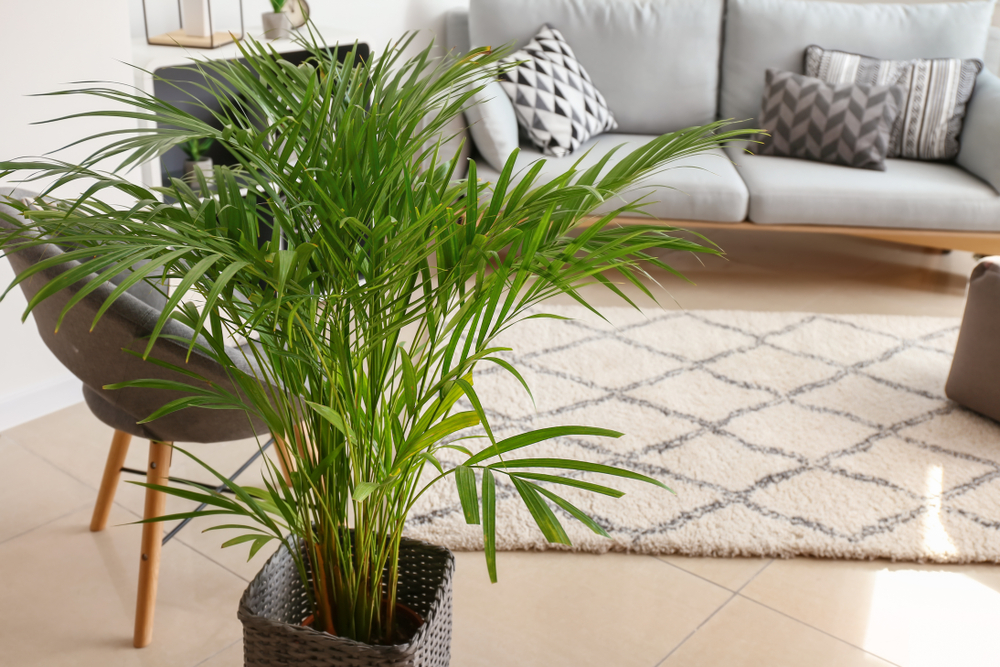
The Areca Palm is known for purifying indoor air and is said to absorb radiation from electronic devices. Its feathery green leaves spread gracefully, making it an attractive decorative choice. This palm works well in large rooms where it can stand tall and fill open spaces. Many prefer it as a natural filter for home offices or living areas. Its presence adds freshness while reducing pollutants and radiation exposure.
Areca Palms need bright, indirect light to stay healthy. Water them often enough to keep the soil lightly moist, but avoid overwatering. Fertilize during the growing season to support strong leaf growth. Wipe the leaves occasionally to remove dust. With regular care, this palm can live indoors for many years.
Snake Plant

Snake Plant is believed to help absorb harmful radiation from televisions and computers. Its tall, upright leaves make it a common indoor favorite. This plant is tough and grows even in less ideal conditions. Many households choose it because it improves air quality and is visually striking. It also requires less maintenance compared to other houseplants.
To keep a Snake Plant healthy, place it in indirect light, though it tolerates low light as well. Water lightly and allow the soil to dry between waterings. Use a well-draining pot to prevent root damage. Clean the leaves when they gather dust. With these simple steps, the Snake Plant will thrive with little effort.
Spider Plant
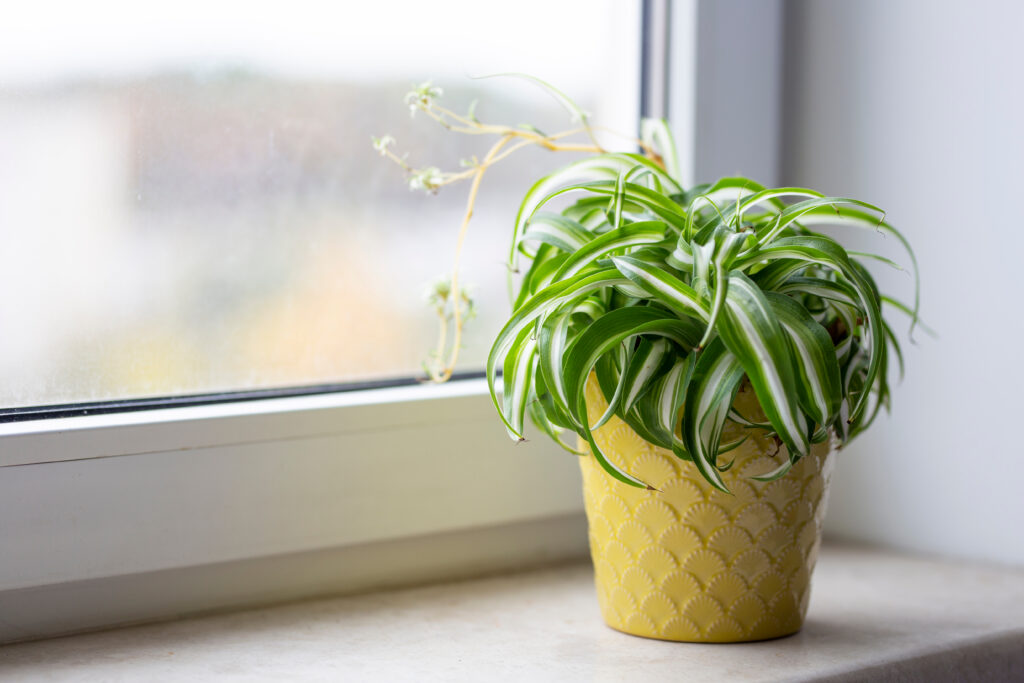
Spider Plant has been studied for its ability to clean indoor air and reduce radiation effects. It produces long, narrow leaves with small baby shoots that hang gracefully. This makes it both decorative and functional. Many keep it near computers or Wi-Fi routers to balance indoor environments. It is one of the easiest plants to grow at home.
Spider Plants prefer indirect sunlight and well-draining soil. Water moderately and allow the soil to dry slightly between waterings. Cut back brown tips to keep the leaves looking fresh. They can grow in hanging baskets or tabletop pots. This plant is a dependable choice for anyone new to indoor gardening.
Peace Lily
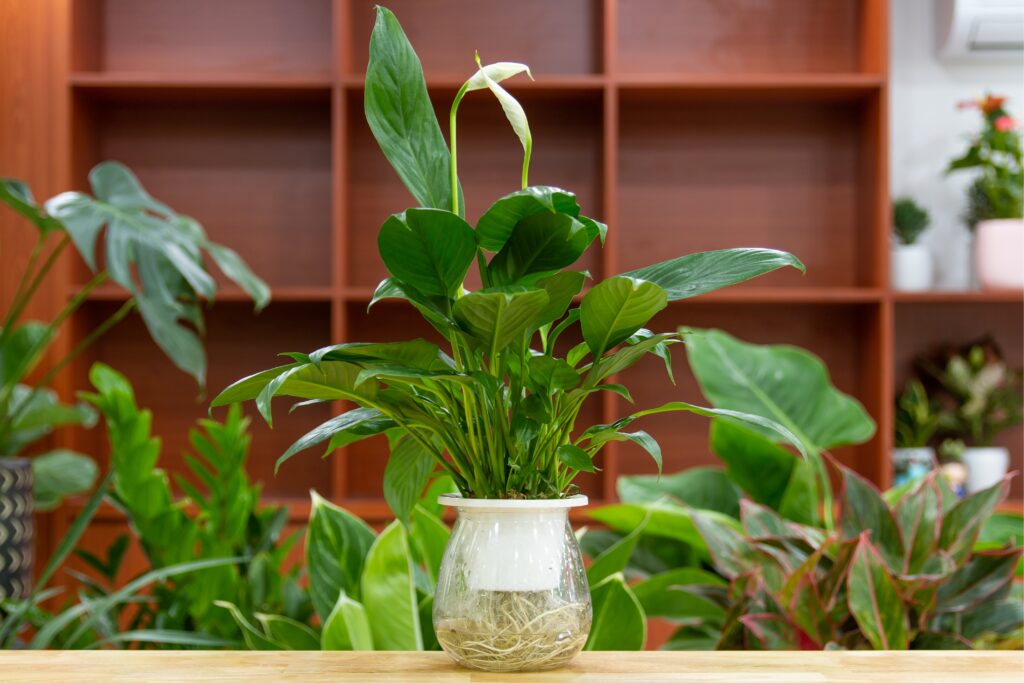
Peace Lily is thought to absorb radiation and improve indoor air conditions. Its large, dark leaves and white blooms brighten up any room. This plant works well in offices and homes with limited light. Many people value it for both its beauty and its usefulness. It can grow steadily without demanding too much care.
To take care of Peace Lily, water it when the soil feels dry. It grows best in shaded areas with indirect sunlight. Keep the leaves clean to help the plant breathe. Fertilize lightly every few months to promote flowers. This plant is a reliable companion for both beginners and experienced growers.
Rubber Plant
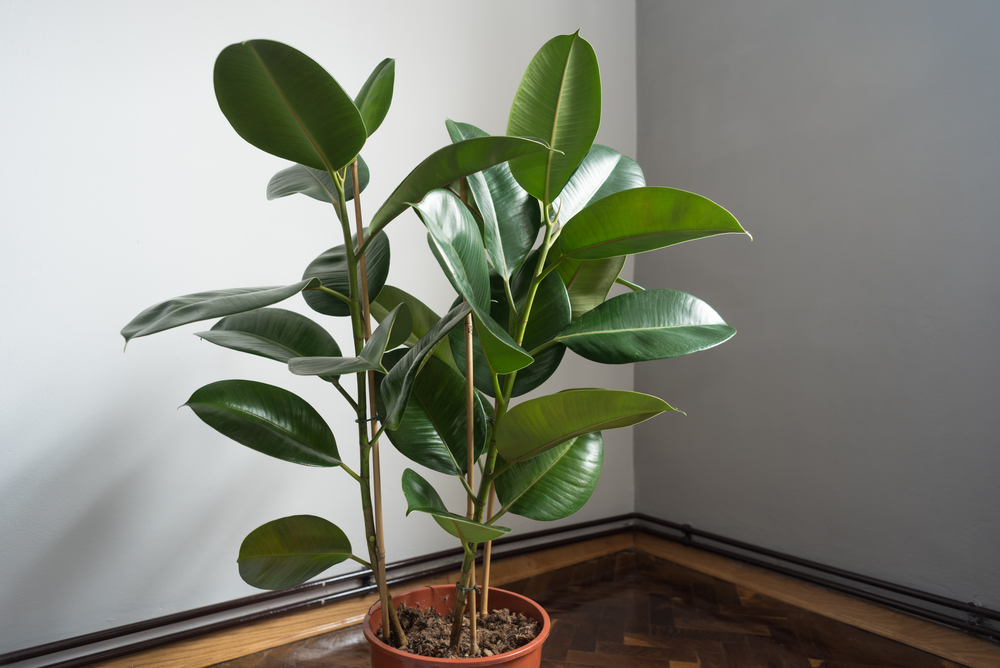
The Rubber Plant is known for absorbing toxins and may also help reduce radiation from electronics. Its broad, shiny leaves give it a strong and elegant appearance. This plant can grow quite tall indoors, making it perfect for corners of rooms. It thrives in both homes and offices where there is moderate light. Its hardy nature makes it appealing for many plant enthusiasts.
To care for a Rubber Plant, place it in bright, indirect light. Water it only when the soil begins to dry. Wipe the leaves often to keep their surface clean and shiny. Fertilize during the growing season for stronger growth. With consistent attention, the Rubber Plant can grow into a striking feature.
Cactus
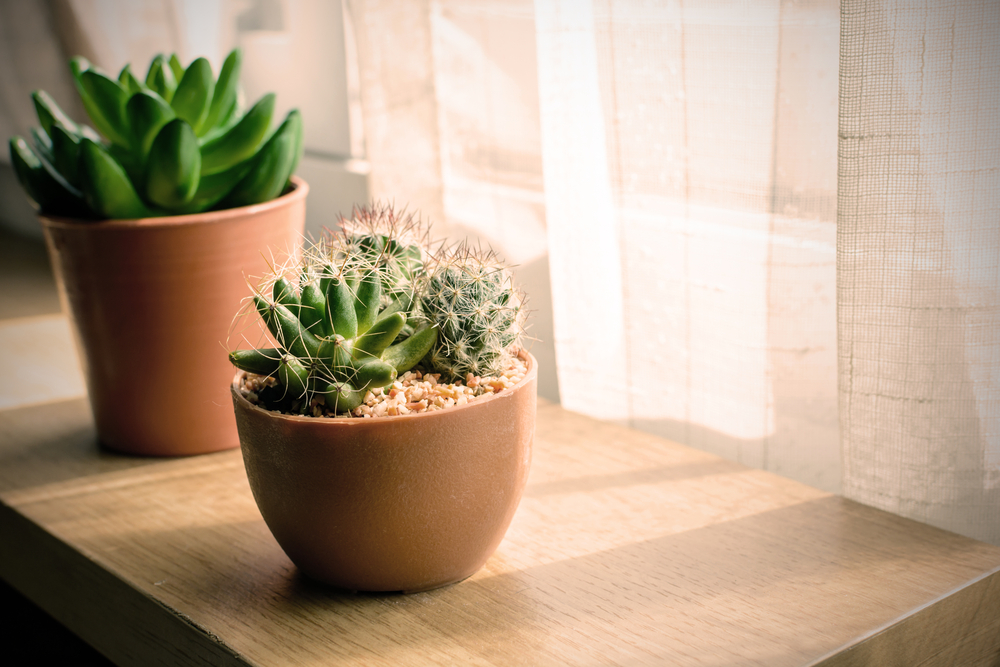
Cactus plants are commonly believed to absorb radiation from computers and other devices. Their thick stems store water, allowing them to survive in dry conditions. They come in many shapes and sizes, which makes them versatile decorative plants. Many people place small cacti on desks or window sills for both function and beauty. They require little maintenance, making them ideal for busy lifestyles.
Cacti need bright sunlight to stay healthy. Water sparingly since overwatering can easily cause root rot. Keep them in pots with good drainage to prevent damage. Remove dust from the surface with a soft brush. With the right conditions, cacti can live for decades indoors.
Boston Fern
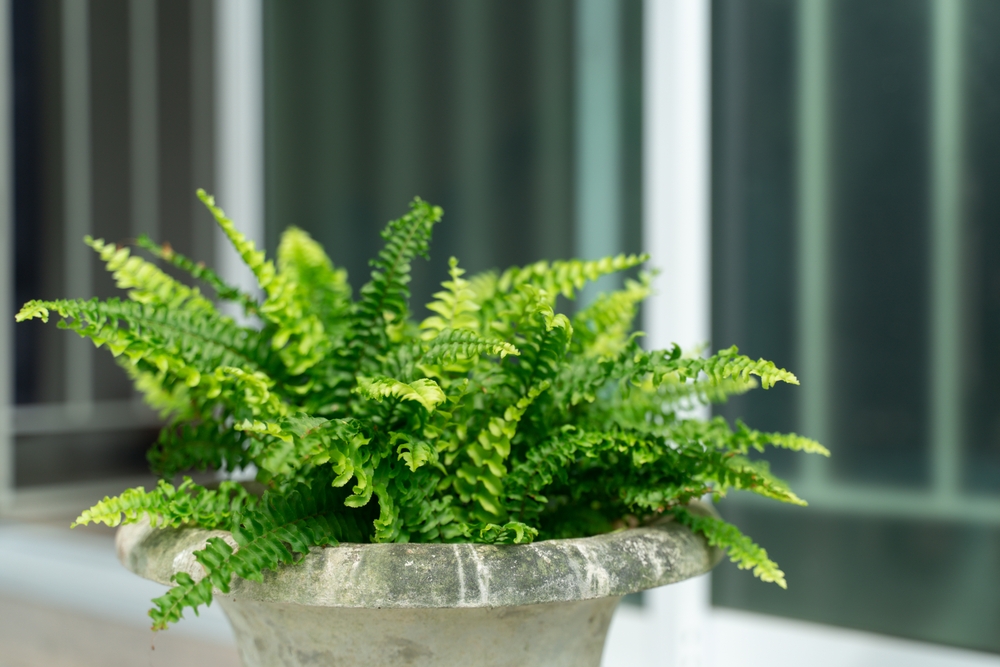
Boston Ferns are valued for their lush leaves and their ability to absorb indoor pollutants and radiation. Their arching fronds create a natural and calming atmosphere. They thrive in areas with humidity, making them excellent for kitchens and bathrooms. Many people also keep them in living rooms near electronic devices. Their greenery brings comfort and balance to any space.
Boston Ferns prefer indirect sunlight and slightly moist soil. Mist the leaves regularly to maintain humidity. Trim older fronds to encourage new growth. Fertilize every few weeks during the growing season. With consistent care, Boston Ferns can remain attractive all year.
Holy Basil (Tulsi)
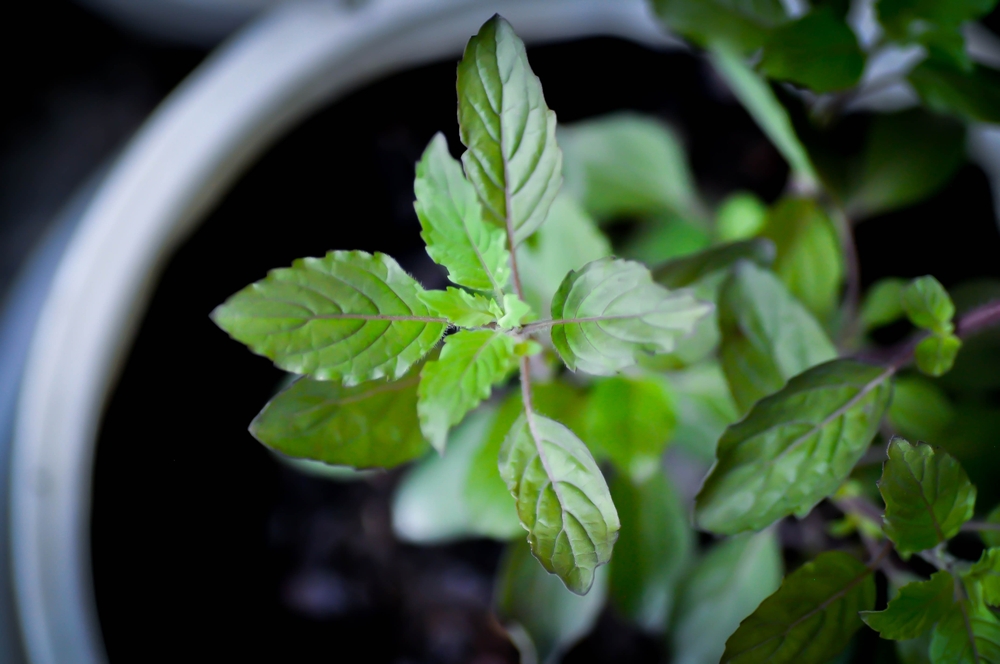
Holy Basil, also known as Tulsi, is widely respected in many cultures for its health benefits. It is also believed to reduce harmful effects of radiation in the home. Its aromatic leaves bring freshness and can even be used in teas. Many households keep this plant indoors as both a purifier and a herbal remedy. It represents both tradition and wellness.
Tulsi thrives in warm sunlight, so place it near a window with good light. Water it regularly but do not let the soil remain soggy. Prune leaves often to keep the plant bushy and healthy. Fertilize lightly every month to encourage growth. With steady care, Holy Basil can grow into a healthy and useful plant.
Bamboo Palm
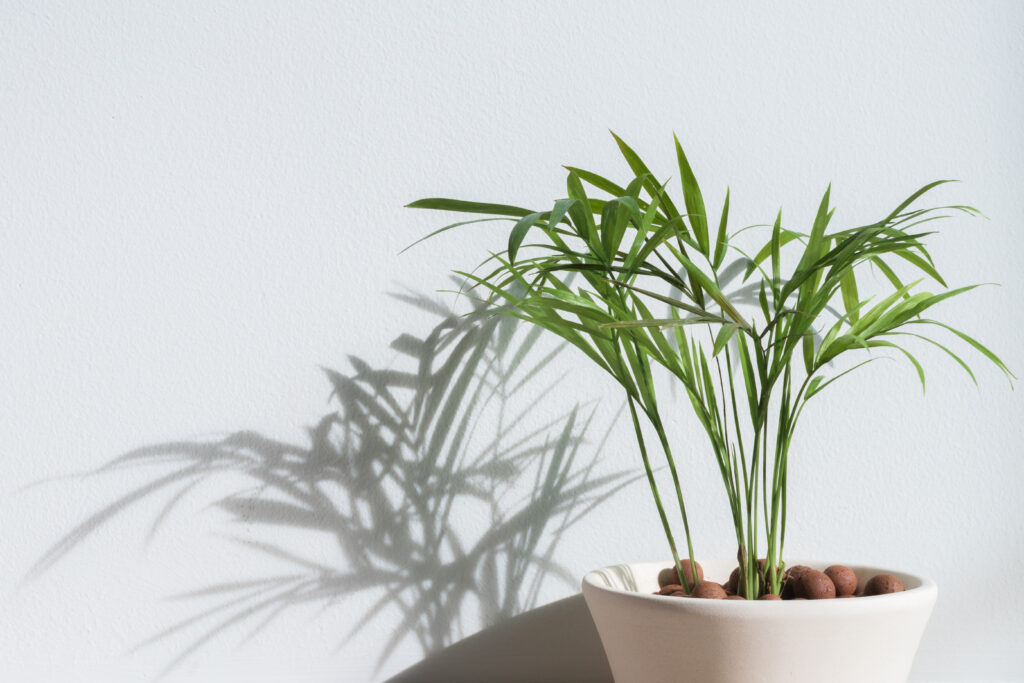
The Bamboo Palm is thought to absorb harmful substances and radiation in the home. It has long, graceful leaves that resemble bamboo stalks. This plant is ideal for brightening living spaces and improving indoor quality. Many people keep it near furniture or electronic devices. It grows into a medium-sized indoor tree, making it both useful and decorative.
To care for Bamboo Palm, place it in indirect sunlight. Keep the soil evenly moist but not soggy. Wipe leaves often to keep them looking fresh. Fertilize monthly during the growing season. With proper care, it can live indoors for many years.
Gerbera Daisy
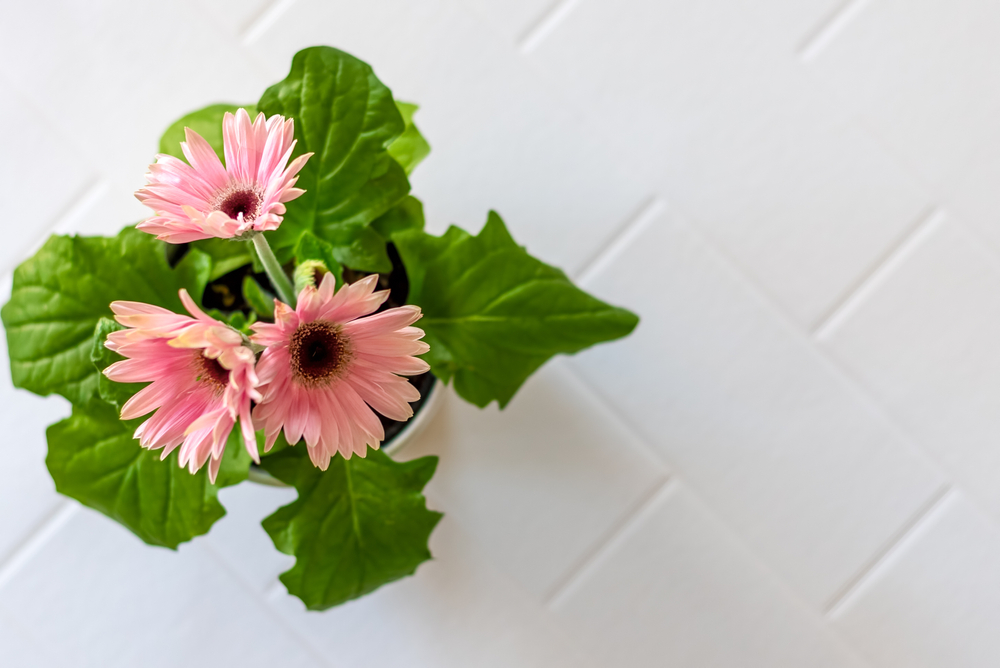
Gerbera Daisy is known for its vibrant blooms and its ability to filter harmful elements in the air. It is also believed to reduce the impact of radiation indoors. Its colorful flowers make it stand out among indoor plants. Many place it near windows or electronics for added beauty and support. This plant combines practical benefits with cheerful decoration.
Gerbera Daisy needs direct sunlight for a few hours daily. Water it when the soil feels dry but avoid overwatering. Remove spent flowers to encourage new blooms. Fertilize regularly during blooming season. With attention, it rewards you with bright colors and fresh air benefits.
Weeping Fig (Ficus Benjamina)
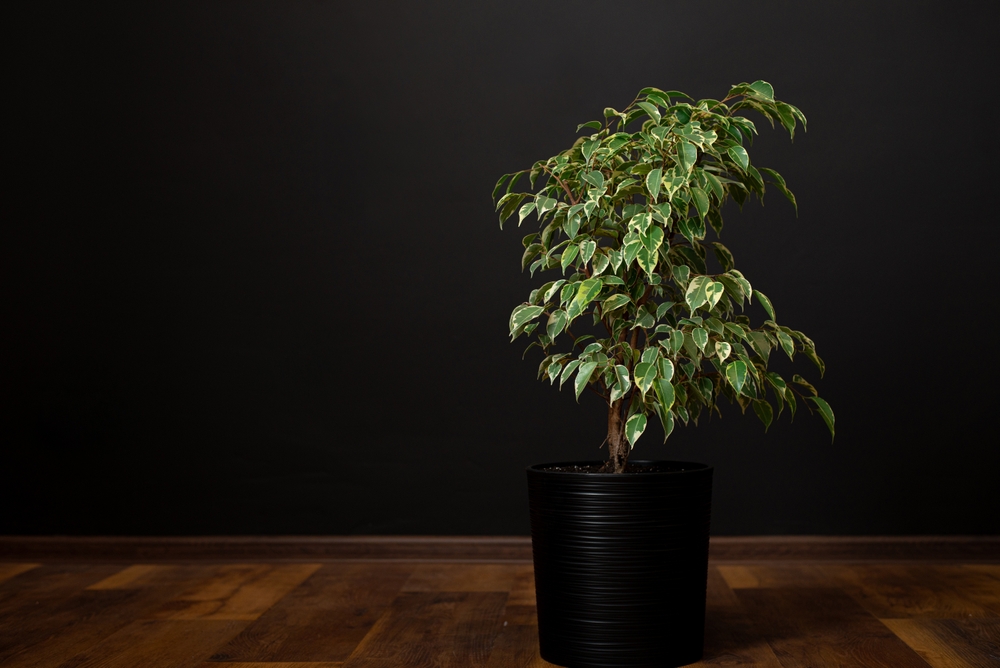
The Weeping Fig is a tall plant with slender branches and glossy leaves. It is believed to absorb some radiation and is widely used in homes and offices. Its graceful look makes it a decorative feature in any room. It can grow to several feet in height indoors. This makes it both attractive and practical for large spaces.
To care for Weeping Fig, give it bright, indirect sunlight. Water moderately and let the soil dry slightly between waterings. Avoid moving it often since it may drop leaves when stressed. Prune occasionally to control shape and encourage growth. With proper care, it can live for many years.
Lemon Balm
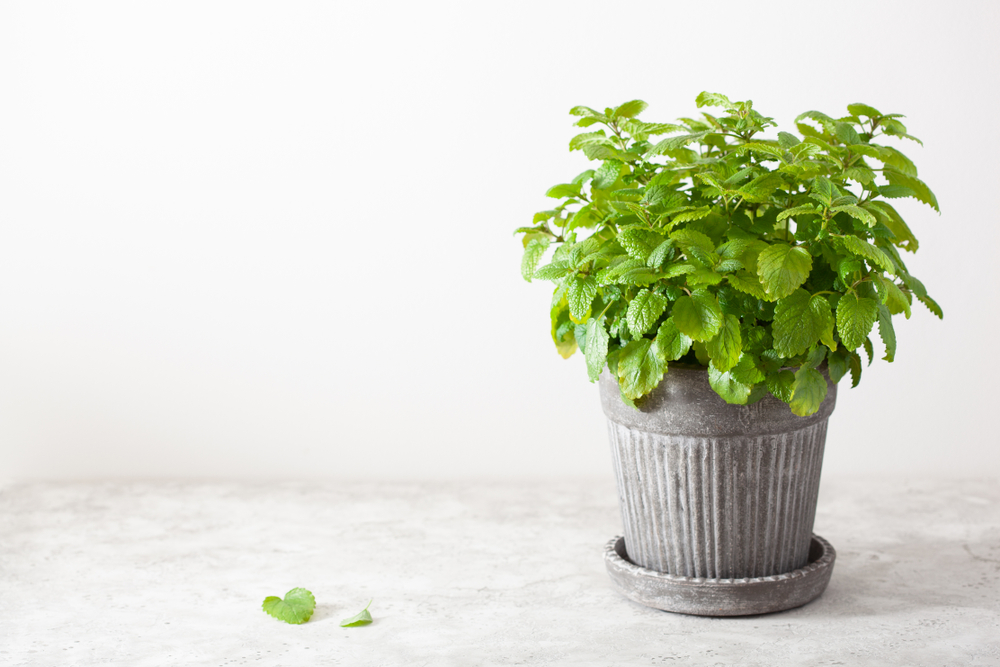
Lemon Balm is a fragrant herb that is thought to help reduce radiation around the home. Its bright green leaves release a pleasant citrus scent. Many people grow it both for its air-cleansing qualities and for use in teas. It grows well in pots placed indoors near windows. Its freshness makes it a favorite choice for kitchens and study areas.
Lemon Balm prefers sunlight but tolerates partial shade. Water regularly to keep the soil moist but not waterlogged. Pinch back stems to promote bushy growth. Fertilize lightly to maintain healthy leaves. With care, it will stay lush and fragrant throughout the year.
Chrysanthemum
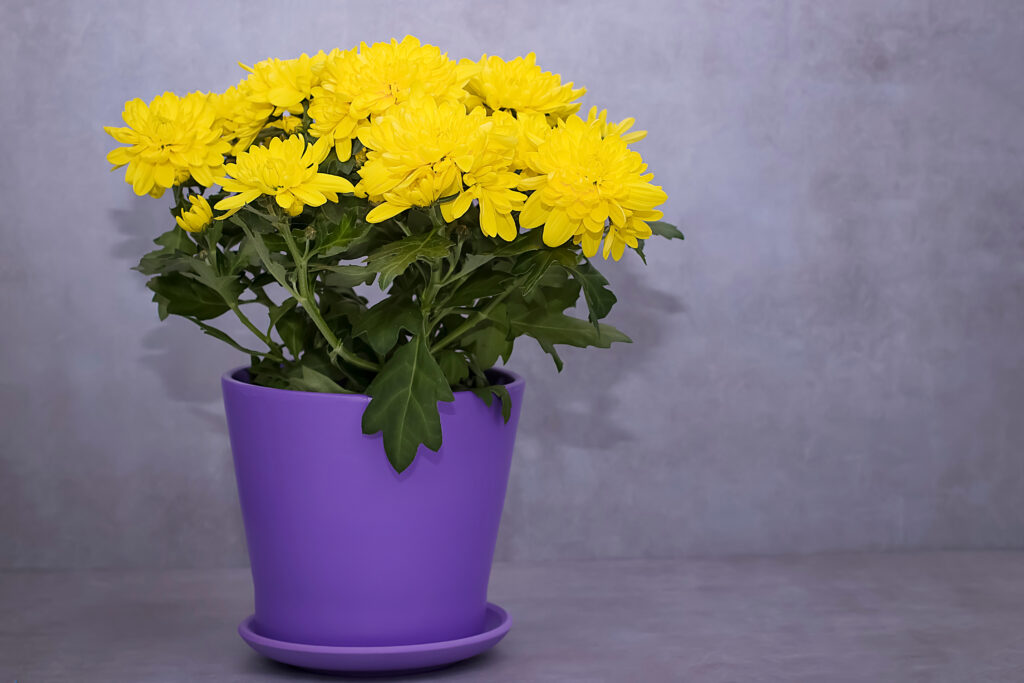
Chrysanthemums are bright flowering plants often associated with air purification. They are also said to reduce harmful effects of radiation indoors. Their colorful flowers brighten living spaces while contributing to a healthier atmosphere. Many people grow them indoors in pots or outdoors in gardens. They add both charm and usefulness to the environment.
Chrysanthemums require direct sunlight for best flowering. Water them frequently but do not let the soil remain soaked. Trim spent flowers to encourage continuous blooming. Fertilize often during the growing season for strong results. With attention, they provide both beauty and health benefits.
Rosemary
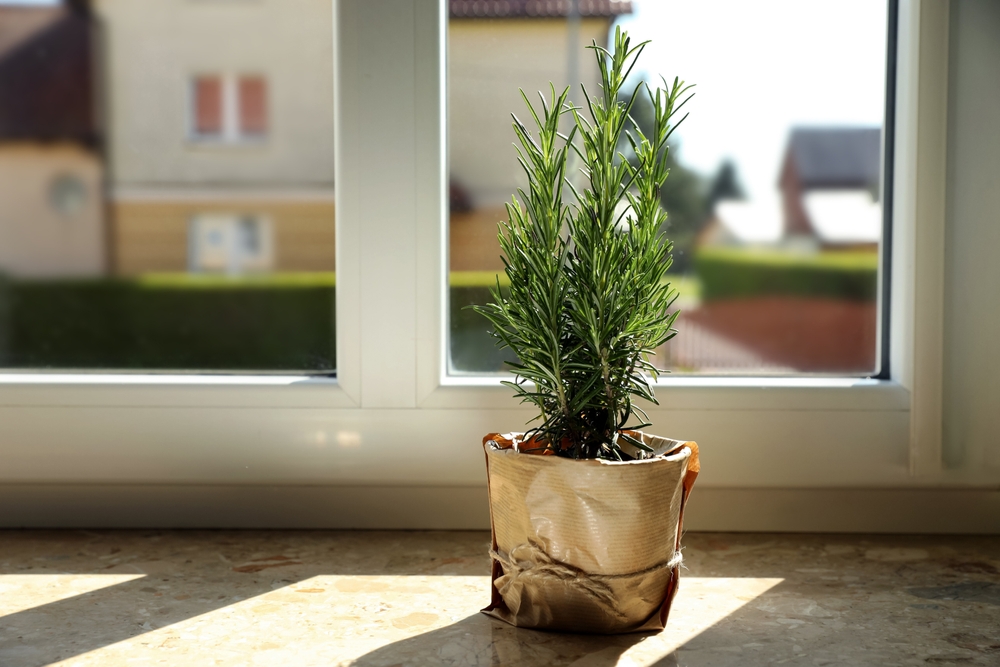
Rosemary is a fragrant herb that is believed to absorb radiation from the environment. Its needle-like leaves also provide a pleasant aroma and can be used in cooking. Many households grow it indoors near windows or in sunny balconies. It serves both as a functional plant and as a decorative herb. Rosemary brings a touch of freshness to any room.
Rosemary needs full sunlight for several hours each day. Water it only when the soil is dry to prevent root rot. Trim stems regularly to promote fuller growth. Fertilize lightly during the growing months. With proper care, Rosemary can thrive indoors for years.
Golden Pothos
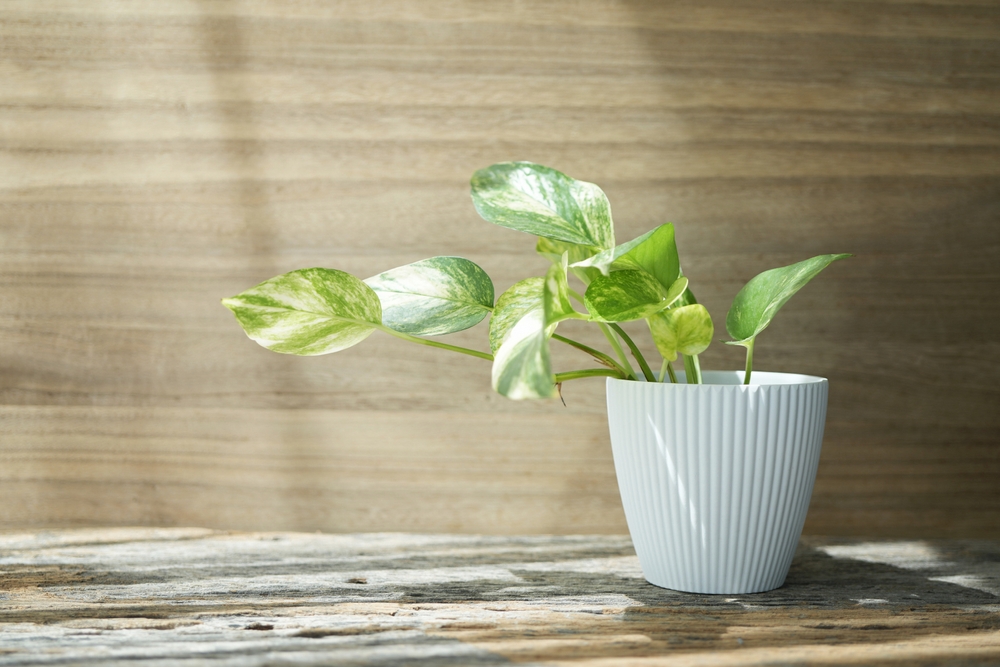
Golden Pothos is a popular houseplant known for its trailing vines and heart-shaped leaves. It is also said to absorb radiation and improve indoor air quality. Its low maintenance makes it perfect for beginners. Many use it in hanging baskets or let it climb on supports. Its greenery adds warmth and style to any corner of the home.
Golden Pothos grows well in low or indirect light. Water moderately and let the soil dry slightly between watering. Trim vines to control length and encourage new growth. Fertilize monthly during the growing season. With little effort, it will continue to thrive indoors.
Chinese Evergreen

Chinese Evergreen is a hardy indoor plant that helps purify air and may absorb radiation. Its broad, patterned leaves bring elegance to living rooms and offices. It thrives even in low light conditions, which makes it popular in many households. People appreciate it for both beauty and usefulness. Its presence brightens indoor environments effortlessly.
To care for Chinese Evergreen, keep it in shaded areas with indirect light. Water moderately and allow the soil to dry slightly. Wipe the leaves to keep them fresh and clean. Fertilize every few months to support healthy foliage. This plant will remain attractive with minimal effort.
Radiation from electronics is a part of daily life, but plants can help balance your environment. These green companions not only refresh the air but also provide a calming presence indoors. Their low maintenance makes them ideal for busy households. Bringing them into your home is an easy step toward a healthier lifestyle.
This article originally appeared on Avocadu.
